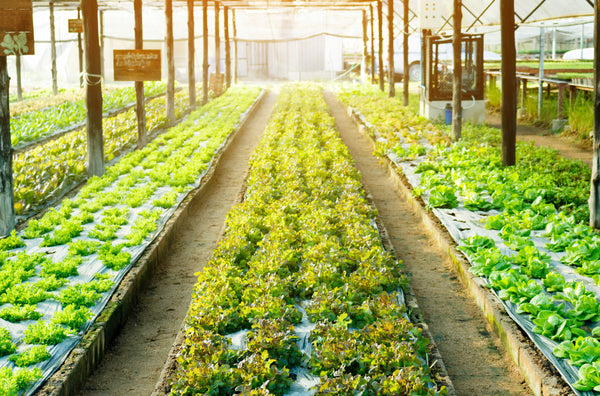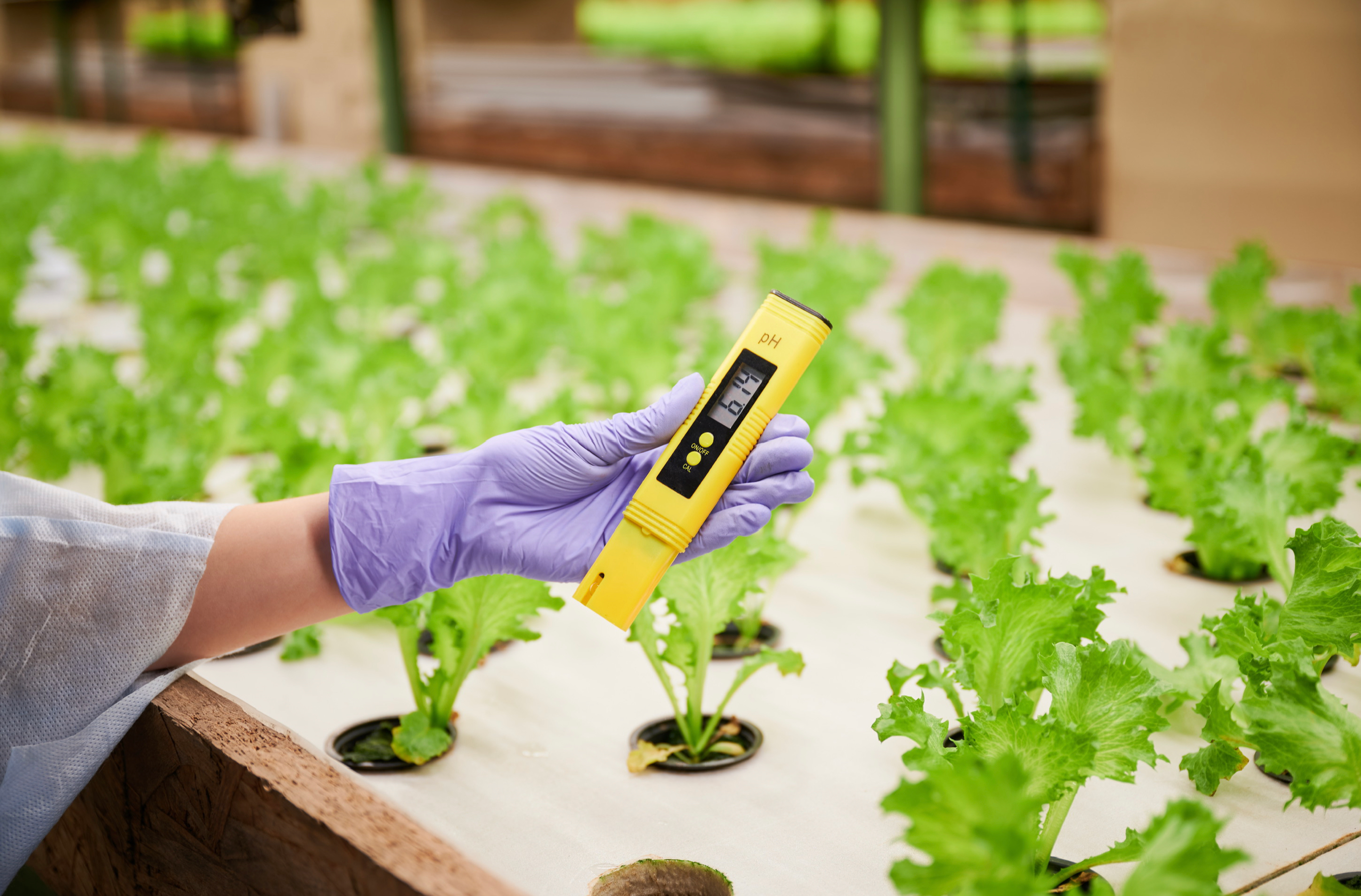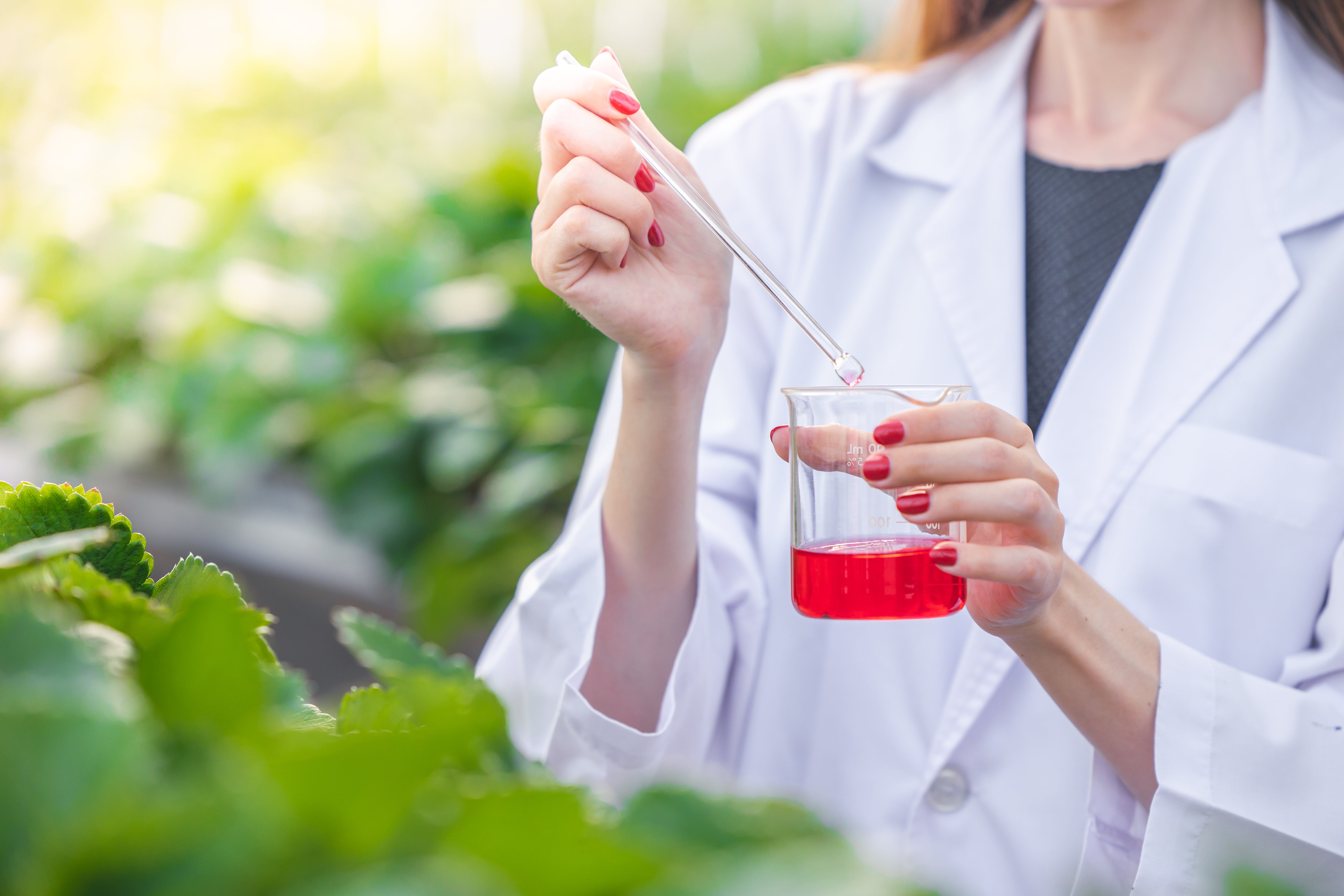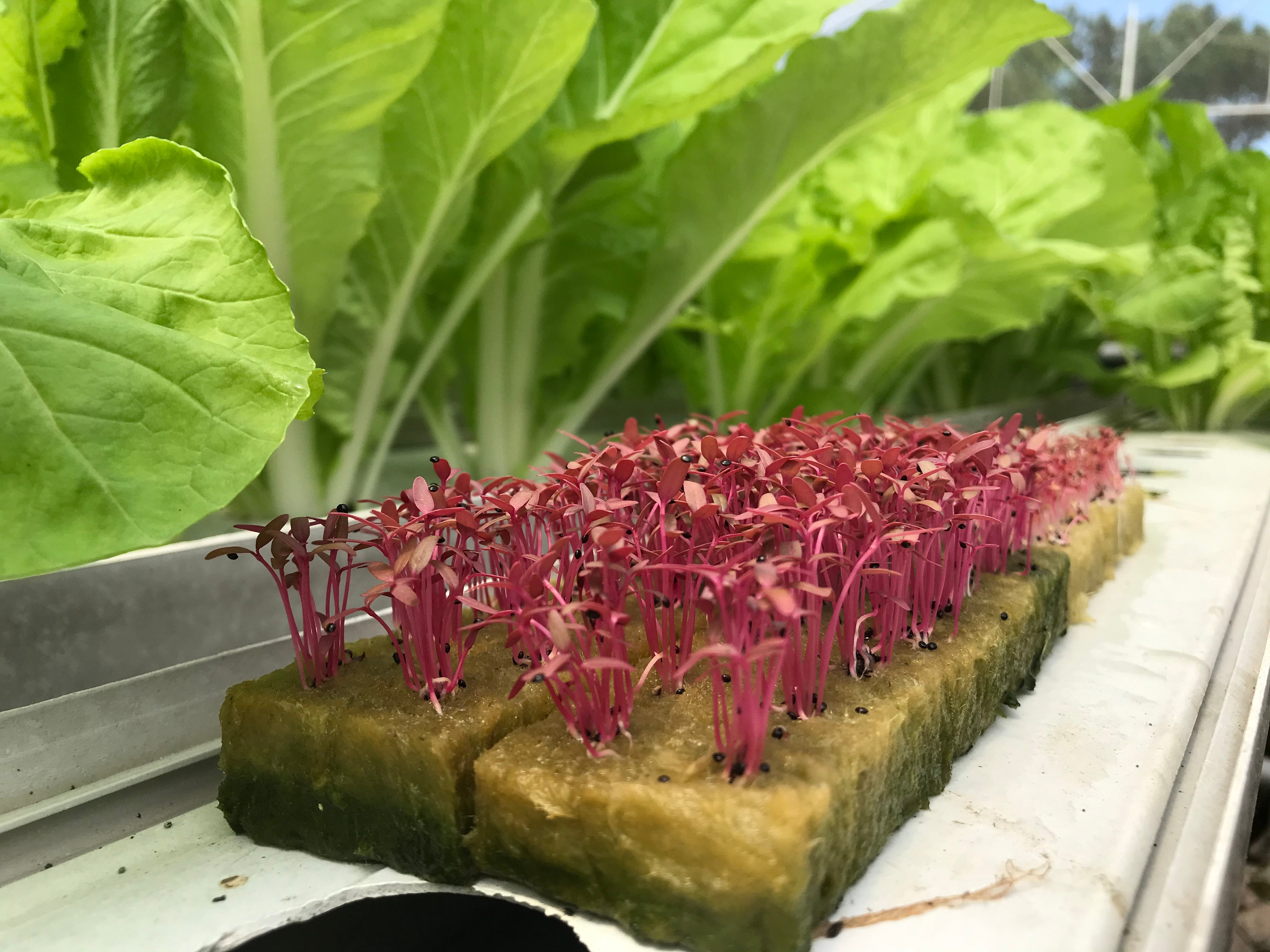Hydroponic Crop Selection: An Easy Guide

Hydroponic Crop Selection Chart
HYDROPONIC CROP SELECTION CHART
GREENS
ARUGULA
Arugula is a brassica, like mustard or kale. It carries a spicy punch in a tender leaf, making it a great addition to salads, pizzas, and sandwiches. Some varieties are spicier than others, with the Rocket variety being considered the spiciest of the three most popular (astro, rocket, and sylvetta). Though arugula grows like lettuce (some varieties are ready for harvest in just 3 weeks) and is in the family of brassicas, it’s often considered an herb.
GROWING ARUGULA
Planting: Germinate from seed
Harvesting: Full harvest
Pests and diseases: Rare, most common are aphids and flea beetles. Disease problems rarely occur.
pH range: 5.5–6.5
EC/PPM: 0.8–1.4/400–700
Light hours: 12–18
Temperature Range: 50–75°F (10–24°C) Ideal: 65°F (18°C)
BOK CHOY
Bok choy—also called white Chinese cabbage, Chinese chard, Chinese mustard cabbage, and pak choi, among others—belongs to the leafy vegetable pak choi family of Chinese brassicas. Bok choy has white or green, thick, crunchy stems with light to dark green wide leaves. All parts, stems, and leaves can be eaten, with the leaves being soft and buttery, while the stalks are crunchy and slightly bitter. Size can vary from 4 to 12 inches (10–30 cm) tall—bigger if lengthier grow-out times are practiced.
GROWING BOK CHOY
Planting: Germinate from seed
Harvesting: Full harvest
Pests and diseases: Rare, most common are aphids and powdery mildew
pH range: 5.5–6.5
EC/PPM: 1.5–2.5/750–1250
Light hours: 14–18
Temperature Range: 55–75°F (13–24°C) Ideal: 65°F (18°C)
KALE
Kale has been hailed as a super food and has found its way into home and restaurant menus alike. There are a lot of different varieties of kale, like the scaly looking dinosaur kale (also called Tuscan kale) and curly kale. Some varieties display shades of red and purple, like Russian red kale. Kale’s wide EC range makes it compatible with many different herbs and greens. Fortunately, kale is another crop that when grown indoors is targeted by only a few pests and diseases, such as aphids and powdery mildew.
GROWING KALE
Planting: Germinate from seed
Harvesting: For partial harvest, only take 30% of the plant at one time
Pests and diseases: Rare, aphids and powdery mildew most likely indoors
pH range: 5.5–6.5
EC/PPM: 1.6–2.5/800–1250
Light hours: 14–18
Temperature Range: 45–85°F (7–30°C) Ideal: 65°F (18°C)
LETTUCE
Lettuce is one of the most popular crops in the world. This cool season crop grows sweet and tender, and it’s a perfect addition to any fresh dish. Lettuce grows well in almost any gardening system, whether hydroponic, aquaponic, or traditional soil gardens. It takes up relatively little space and has a short (5–6 weeks from transplant or 9–11 weeks from seed) growing cycle.
GROWING LETTUCE
Planting: Germinate from seed
Harvesting: Harvest lettuce as a whole head (or whole plant) and store at 32–35°F (0–2°C). Keep temperatures as consistent as possible.
Pests and diseases: Aphids, leaf miners, and powdery mildew
pH range: 6.0–7.0
EC/PPM: 1.2–1.8/600–900
Light hours: 14–18
Temperature: Range: 45–75°F (7–24°C) Ideal: 65°F (18°C)
MUSTARD GREENS
Mustard greens are another member of the brassica family (a relative of kale and cabbage). The ruffled leaves of mustard taste similar to radishes and can add a spicy bite to a salad or a sandwich or can be eaten by themselves (often steamed). Mustard is often cultivated for its seed, which is used in brown mustard (the condiment) and has been used for centuries in folk remedies for aches, arthritis, and even to promote cow milk production in some areas of the world. A favourite among many growers is the Southern Giant Curled variety; however, many varieties have been bred with different flavours and colours ranging from green to dark purple.
GROWING MUSTARD GREENS
Planting: Germinate from seed
Harvesting: For partial harvest, only take 30% of the plant at one time
Pests and diseases: Potential pests and diseases are minimal—cabbage loopers, flea beetles, cabbage worms, and clubroot
pH range: 5.5–6.5
EC/PPM: 1.2–2.4/600–1200
Light hours: 14–18
Temperature Range: 50–75°F (10–24°C) Ideal: 65°F (18°C)
SWISS CHARD
Chard is a French green popular in greenhouses and kitchens around the world. The tender leaves add freshness and a mild buttery flavour to dishes like soups, salads, or on BCG (beet, chard, and goat cheese) sandwiches. Chard leaves grow on elegant stems that range in colour from red to yellow and white and can get larger than a dinner plate. Chard is a great crop for beginners due to its easy-to-grow nature. This cool season crop is not only tasty and easy to cook, but it’s also easy to grow in almost any hydroponic system.
GROWING CHARD
Planting: Germinate from seed
Harvesting: Only harvest 30–35% of the plant, leaving the rest of the plant to support another harvest
Pests and diseases: Rare, potential pests and diseases include aphids and powdery mildew
pH range: 5.5–6.5
EC/PPM: 1.6–2.3/800–1150
Light hours: 14–18
Temperature Range: 55–75°F (13–24°C) Ideal: 65°F (18°C)
HERBS
BASIL
There are dozens of basil varieties, from spicy bush basil to lemon basil and Thai basil, all of which bring a delightful twist to any dish when paired well. Favourites are the classic sweet basil, Genovese basil, and dwarf basil. Basil produces large harvests and is so fragrant and delicious you won’t want to stop growing it once you start.
GROWING BASIL
Planting: Germinate from seed or start from clone
Harvesting: You can start picking leaves when the plants are at least 6–8 inches (15–20 cm) tall
Pests and diseases: Potential pests include aphids, thrips, and whiteflies. Diseases include root rot, leaf spot diseases, and downy mildew.
pH range: 5.5–6.0
EC/PPM: 1.0-1.6/500–800
Light hours: 14–18
Temperature Range: 65–90°F (18–32°C) Ideal: 75°F (24°C)
CHIVES
Common chives are the variety most used. A few other varieties, like garlic chives and Chinese chives, are also available. Chives are a tough crop that will survive a wide range of temperatures and can even go without water for a while without it impacting quality. Chives are also rarely infected with diseases and rarely targeted by pests. Chives propagate rapidly from roots and can be planted by division (this is ideal, since germination times on chives are relatively long).
GROWING CHIVES
Planting: Germinate from seed or from root by breaking apart mature plants and replanting
Harvesting: Harvest every 2–3 weeks by cutting the plant to 1–2 inches (2.5–5 cm) from the crown
Pests and diseases: Rare, most common in hydroponic systems are fungus gnats
pH range: 5.5–6.5
EC/PPM: 1.6–2.2/800–1100
Light hours: 14–18
Temperature: Range: 55–80°F (13–27°C) Ideal: 70°F (21°C)
CILANTRO (CORIANDER)
Cilantro (coriander) can be a tricky crop to grow since it bolts very easily, especially in hot conditions. If bolting is triggered, trim the bolts, and adjust environmental conditions. Be aware that the flavour of the greens becomes more bitter and harsh once the plant has bolted. You can purchase slow bolting seeds to minimise the potential for crop failure.
GROWING CILANTRO (CORIANDER)
Planting: Germinate from seed
Harvesting: Harvest completely cutting at the base of the plant
Pests and diseases: Cilantro (coriander) can be attacked by aphids and powdery mildew
pH range: 5.5–6.5
EC/PPM: 1.2–2.0/600–1000
Light hours: 14–18
Temperature Range: 50–80°F (10–27°C) Ideal: 65°F (18°C)
FENNEL
A mildly sweet herb with a taste reminiscent of anise, fennel is edible both as bulbs and greens. The greens may be harvested once before a full-plant harvest a few weeks later. Fennel prefers a lower EC and moderate pH. Fennel is a hardy plant—it often proves to be drought tolerant, heat tolerant, and cold tolerant. Fennel rarely struggles with pests if it’s kept healthy, although aphid infestations could affect the crop. Fennel has a wider range of germination rates, from about 60% to 90%. Be sure to get good seeds. Seeds take 1–2 weeks to germinate and are typically ready to plant 3–5 weeks later. The bulbs can be harvested as soon as you want, but 0.5 to 1 lb (227–454 g) bulbs are typically sold at supermarkets. From seedlings, it takes most plants 6–8 weeks to reach the harvesting size.
GROWING FENNEL
Planting: Germinate from seed
Harvesting: At first harvest only take 30% of the greens, and take the full plant on the second harvest
Pests and diseases: Rare, aphids and damping off are most common
pH range: 5.5–6.5
EC/PPM: 1.0–1.8/500–900
Light hours: 14–18
Temperature Range: 55–75°F (13–24°C) Ideal: 65°F (18°C)
MINT
There are dozens of types of mint, but the main varieties are spearmint (Mentha spicata), peppermint (Mentha x piperita), and pennyroyal mint (Mentha pulegium). Some other varieties, like lemon mint (Monarda citriodora), are actually not mint at all. When mint is used in the kitchen, it’s usually spearmint. Mint can be grown from seed, but using cuttings or rootstock is much quicker, especially on a commercial scale. From cuttings, mint roots out and grows to maturity within a few weeks.
GROWING MINT
Planting: Germinate from seed or start from cuttings or rootstock
Harvesting: Multiple harvests through pruning, the last of which the entire crop is harvested completely
Pests and diseases: Occasional powdery mildew
pH range: 5.5–6.5
EC/PPM: 1.6–2.6/800–1300
Light hours: 14–18
Temperature: Range: 55–75°F (13–24°C) Ideal: 70°F (21°C)
OREGANO
Oregano is a small, bushy herb with a strong, unique flavour that’s especially pungent when the herb is fresh. The leaves are used fresh and dried in most types of cuisine, but especially Italian and French. There are three main kinds of oregano used for culinary purposes: Greek (Origanum vulgare hirtum), Mexican (Lippia graveolens, which actually isn’t oregano at all), and Italian (Origanum x majoricum). Oregano has small, rounded leaves that are fuzzy in some species—this makes it harder for them to deal with high humidity.
GROWING OREGANO
Planting: Germinating from seed works, but propagation from cuttings is best
Harvesting: Multiple harvests through pruning, the last of which the entire crop is harvested completely
Pests and diseases: Pests include thrips, whiteflies, aphids, spider mites, and leaf miners. Diseases affecting oregano plants are primarily caused by fungi.
pH range: 5.5–6.5
EC/PPM: 1.5–2.0/750–1000
Light hours: 14–18
Temperature Range: 55–80°F (13–27°C) Ideal: 70°F (21°C)
PARSLEY
Parsley is native to the Mediterranean, and it’s used worldwide both as a garnish and as a popular addition to savoury dishes. Several varieties of parsley exist, from the more bitter and frilly garnish parsley to the flavourful, tender large leaf varieties. Though popular mostly as a cooking ingredient, parsley has been used in a variety of ways, from a medicinal ingredient to a symbol in ceremonies like the Seder dinner. Parsley’s tolerance of a wide temperature range and EC range make it an easy crop to grow. Large leaf varieties, like Italian flat leaf, grow abundantly in hydroponics.
GROWING PARSLEY
Planting: Germinate from seed
Harvesting: Multiple harvests—it’s common to harvest parsley twice before replanting
Pests and diseases: Pests and diseases are rare, the most common pests are thrips and aphids
pH range: 6.0–6.5
EC/PPM: 1.8–2.2/900–1100
Light hours: 14–18
Temperature Range: 55–80°F (13–27°C) Ideal: 70°F (21°C)
ROSEMARY
Rosemary is a great fit for indoor farming because it can be very compact. Rosemary prefers “dry feet”—this means that you should give roots a dry period between watering. Starting rosemary from seed can be a finicky process—seeds need consistent moisture, and germination rates tend to be around 30–50%. It’s easier to propagate rosemary from cuttings, although some argue that best flavours and aromatics come from seed grown plants.
GROWING ROSEMARY
Planting: Germinating from seed is very difficult, propagation from cuttings is fastest and easiest
Harvesting: Multiple harvests are common through pruning
Pests and diseases: Pests and diseases are rare, the most common are gray mold and powdery mildew when overwatered
pH range: 5.5–6.5
EC/PPM: 1.2–1.8/600–900
Light hours: 14–18
Temperature Range: 60–80°F (15–27°C) Ideal: 75°F (24°C)
VEGETABLES
TOMATOES
There are lots of varieties of tomatoes and most of them can be grown hydroponically. Tomatoes love light and warmth. Once the tomato plants start getting big, you’ll likely need to start pruning them so that they don’t get out of control.
GROWING TOMATOES
Planting: Germinate from seed
Harvesting: Full harvest
Pests and diseases: Aphids, whiteflies, spider mites, fusarium, and fungal diseases
pH range: 6.0–6.5
EC/PPM: 2.0–4.0/1000–2000
Light hours: 14–18
Temperature Range: 60–90°F (15–32°C) Ideal: 75°F (24°C)
CUCUMBERS
Cucumbers thrive in hydroponics. They are a vining plant, so they will require training and sometimes a trellis to support them. They need to be pruned as well.
GROWING CUCUMBERS
Planting: Germinate from seed
Harvesting: Full harvest
Pests and diseases: Aphids, whiteflies, spider mites, fusarium, and fungal diseases
pH range: 5.0–5.5
EC/PPM: 1.7–2.0/850–1000
Light hours: 12–14
Temperature Range: 65–85°F (18–30°C) Ideal: 75°F (24°C)
PEPPERS
Peppers need lots of oxygen, so you’ll need to make sure your nutrient solution is well oxygenated. They need to be spaced 18–24 inches (45–60 cm) apart.
GROWING PEPPERS
Planting: Germinate from seed
Harvesting: Full harvest
Pests and diseases: Aphids, whiteflies, spider mites, fusarium, and fungal diseases
pH range: 5.5–6.0
EC/PPM: 0.8–1.8/400–900
Light hours: 14–18, most peppers grow well with 16 hours of light
Temperature Range: 65–80°F (18–27°C) Ideal: 75°F (24°C)
BERRIES
STRAWBERRIES
You can order strawberries from most big seed companies, with dozens of varieties available. The two main types of strawberries are ever-bearing and June-bearing—ever-bearing (or day-neutral) varieties are good for hydroponics. Strawberries are best grown from rootstock rather than seed. Vegetative growth (runners) tends to be much faster than sexual reproduction (seeds), so you can cut the time from planting to production by months or years by using rootstock. Strawberries are prone to pests and diseases.
GROWING STRAWBERRIES
Planting: Germinating from seed is very difficult, growing from rootstock or propagation from cuttings is fastest and easiest
Harvesting: Multiple harvests are common throughout the growing season
Pests and diseases: Strawberries can be affected by spider mites, Pythium, and other fungal pathogens
pH range: 6.0
EC/PPM: 1.8–2.2/900–1100
Light hours: 14–18
Temperature Range: 65–75°F (18–24°C) Ideal: 70°F (21°C)
For more great content check out the Proponics YouTube channel below!

By Max Barnes
Max Barnes is a long-time homesteader and author. Max grows the majority of his own food year-round using a variety of different methods, including hydroponics. Hydroponic gardening plays a huge part in his homestead and self-sufficiency goals.




